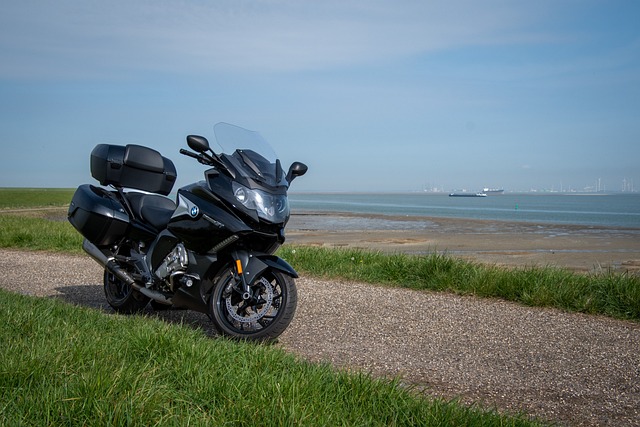Are you feeling strapped for cash and wondering if your motorcycle can be used as collateral?
Owning a motorcycle can be expensive, but pawning it could help ease the financial burden. Pawning your bike is an option to consider when times are tough, but before you take the plunge, there are some important things to know.
In this article we’ll explore whether or not you can pawn a motorcycle, what to consider before doing so, how to prepare your bike for pawning, and what alternatives may exist.
So let’s rev up our engines and get ready for this journey – it’ll make sure that you have all the information necessary before making any decisions regarding your prized possession!
Key Takeaways
- Pawning a motorcycle can provide quick cash by using it as collateral for a short-term loan.
- Seek financial advice and consider the implications and risks before pawning your motorcycle.
- Ensure your motorcycle is in good condition by cleaning it and having a professional mechanic inspect it before pawning.
- Explore alternatives to pawning, such as selling outright, renting out, or selling to a dealer, based on your revenue potential and ownership preferences.
Overview of Pawning
You can pawn all sorts of items, including motorcycles! Pawning is a way to use your assets as collateral for a short-term loan.
It’s important to understand the financial and legal implications of pawning before making a decision. Credit score may be affected when using this service, so make sure you understand the terms and conditions before signing any contracts.
Additionally, it’s recommended to seek financial advice from someone with experience in this area if you’re unsure about the implications of your actions. Ultimately, pawning could be an effective solution if used responsibly and with an understanding of the credit and legal implications that come along with it.
Can You Pawn a Motorcycle?
Many people may be surprised to learn that there are over 8 million motorcycles registered in the United States. While you can certainly pawn a motorcycle, it’s important to understand the process and associated costs before doing so.
To begin, you’ll need proof of ownership such as a title or registration, and you’ll also need to ensure your motorcycle has up-to-date insurance. Additionally, most pawn shops require that all riding gear (helmet, jacket, etc.) is removed prior to pawning a motorcycle.
Depending on the condition and worth of your bike, many shops may offer between 15% – 50% of its value in cash. However, if you’re unable to repay your loan, then your bike could be sold without further notice.
All in all, pawning a motorcycle can be an effective way to get quick cash, but it’s important to weigh out the pros and cons beforehand.
What to Consider Before Pawning Your Motorcycle
Before taking the plunge and pawning your beloved motorcycle, it’s important to consider all the potential risks involved. Renting vs. Selling can be a tricky decision – both have their own pros and cons, so it’s important to weigh out each option carefully.
Make sure you understand what you’re signing up for when you decide to rent or pawn your motorcycle. It’s also important to make sure that you have sufficient insurance coverage before renting or pawning your bike – if something should happen while the motorcycle is rented or pawned, the insurance company may not cover any damages incurred.
Do some research beforehand to ensure that you are making an informed decision about renting vs. selling your motorcycle before making a commitment.
How to Prepare Your Motorcycle for Pawning
Before pawning your motorcycle, it’s important to make sure that it’s in top condition. Here are some things you should do:
- Make sure the bike is clean and free of any dirt or debris.
- Check the tires and brakes for wear and tear, as well as any other potential issues that could affect its value.
- Take a look at motorbike insurance policies to see if they cover loan refinancing in case of emergency situations.
- Have a professional mechanic inspect the bike to ensure it’ll run properly and without issue when you take it to the pawn shop.
By taking these steps before going through with a loan refinance, you can guarantee that your motorcycle will fetch the best price possible from pawnshops.
The Pawning Process
Once you’re sure your ride is in optimal condition, it’s time to move forward with pawning. The process is fairly straightforward, but before you start, it’s important to know the associated costs and fees.
Most pawn shops charge a leasing fee based on the value of your motorcycle in addition to any applicable taxes. Make sure you understand the terms and conditions of your lease agreement so there aren’t any surprises later on. You should also be aware of any additional insurance coverage you may need while your bike is being stored at the pawn shop.
Lastly, keep an eye out for hidden costs or extra fees that may come up during the transaction. Following these steps will ensure a smooth and successful pawning experience.
How to Get Your Motorcycle Back
Getting your motorcycle back doesn’t have to be difficult, even though it may seem intimidating. To get your motorcycle returned to you after pawning it, you’ll need to do the following:
- Refinance the loan by paying off the outstanding balance.
- Make sure you have proof of insurance and registration on hand.
- Bring identification for yourself, as well as any other paperwork required by the pawnshop.
If you can’t pay off the loan in full, some pawnshops offer refinancing options or extensions on loans if they can verify that you have an income source. Be sure to inquire about any additional insurance policies that may be needed when taking out a loan from a pawnshop as well.
With some preparation and research, returning your motorcycle doesn’t have to be a stressful process!
Alternatives to Pawning Your Motorcycle
If you’re looking to get cash without pawning your motorcycle, there are other alternatives. These can help you make money and avoid the legal implications of pawning. Consider the cost benefit of each option and weigh them before making a decision.
| Option | Description | Cost Benefit |
|---|---|---|
| Sell it outright | Selling your bike directly to someone else is a good way to turn your motorcycle into cash quickly with minimal hassle. You’ll get the full value in exchange for giving up ownership rights. This is the most lucrative option if you’re willing to part with it permanently. | High Revenue Potential; Permanent Ownership Loss |
| Rent it out | If you don’t want to give up permanent ownership, consider renting out your bike instead. You won’t make as much money this way, but still get some revenue from people who need short-term access to a motorcycle. Plus, you retain control of your property for future use or sale when conditions improve financially. | Low Revenue Potential; Retain Ownership Rights |
| Refinance or Sell It To A Dealer | Refinancing or selling your motorcycle back to a dealership may be an option if it retains enough value that they would accept it as collateral on a loan or purchase outright at market rate minus fees and taxes for reselling purposes. This can be more complicated than selling directly but could result in higher total proceeds since dealers often offer better deals than individuals do. | Variable Revenue Potential; Transfer Ownership Rights |
Frequently Asked Questions
What is the average interest rate of a pawn loan?
The average interest rate of a pawn loan depends on various factors such as your credit score and loan eligibility. Generally, the better your credit score, the lower the rate you can expect. It’s also important to consider whether or not you meet certain requirements for a loan before applying.
How much can I expect to get for my motorcycle if I pawn it?
Exploring your options for pawning a motorcycle can have cost implications. Consider the make, model, and condition of your bike before deciding how much you might expect to receive for it. An experienced pawnbroker can help guide you through the process.
Are there any additional fees associated with pawning a motorcycle?
Yes, there may be additional fees associated with pawning a motorcycle. These can include motorcycle parts or insurance costs that you must cover to keep the bike secure while it is in the shop. Be sure to ask about any extra costs before signing any paperwork.
Is there a maximum loan term for pawning a motorcycle?
Yes, there is a maximum loan term for pawning a motorcycle. For example, secured loans often have a 6-month cap. However, it’s important to note that credit checks may be required and the terms of any loan may vary depending on the lender.
Is there a minimum age requirement for pawning a motorcycle?
Yes, there is a minimum age requirement for pawning a motorcycle. Generally, secured loans require that you be 18 or older and have a good credit score to qualify.
Conclusion
At the end of the day, you can pawn a motorcycle. But it’s important to consider all your options before taking that route. With the right preparation and understanding of the process, you can make sure your motorcycle is in good hands. Plus, if you ever need to get it back, there are ways to do so.
In short, pawning a motorcycle isn’t as daunting as it may seem. It’s like a butterfly emerging from its cocoon with renewed strength and beauty.



